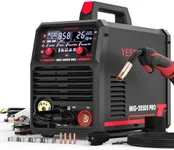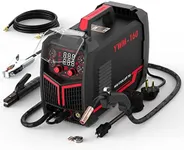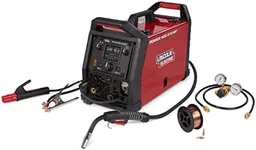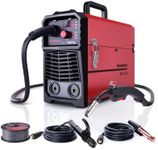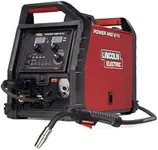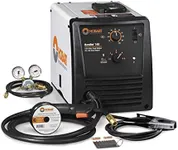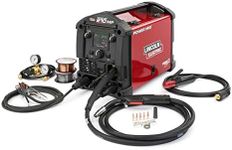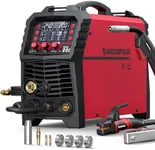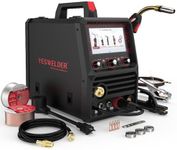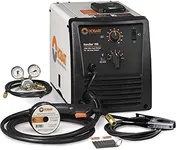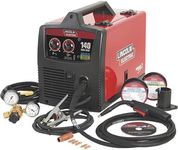Buying Guide for the Best Mig Welders
Choosing the right MIG welder can make a big difference in the quality and ease of your welding projects. MIG welders are popular because they are relatively easy to use and versatile, making them suitable for beginners and experienced welders alike. When picking a MIG welder, it's important to think about what kind of materials you'll be working with, how thick those materials are, and how often you plan to use the machine. Understanding the key specifications will help you find a welder that matches your needs and ensures safe, efficient, and enjoyable welding.Amperage RangeAmperage range refers to the minimum and maximum current the welder can deliver. This is important because it determines the thickness of metal you can weld. Lower amperage is suitable for thin materials like sheet metal, while higher amperage is needed for thicker steel. Welders with a wide amperage range are more versatile, allowing you to tackle a variety of projects. If you mostly work on car panels or light repairs, a lower range may be enough, but for structural work or thicker materials, look for a welder with a higher maximum amperage.
Duty CycleThe duty cycle tells you how long the welder can operate within a 10-minute period before it needs to cool down. For example, a 30% duty cycle at 90 amps means you can weld for 3 minutes and then must let the machine rest for 7 minutes. This is important for both safety and productivity. If you plan to weld for long stretches, such as in a workshop or for big projects, a higher duty cycle is better. For occasional or short welds, a lower duty cycle is usually sufficient.
Input VoltageInput voltage is the type of electrical power the welder requires. Common options are 110/120V (standard household outlets) and 220/240V (industrial or heavy-duty outlets). Lower voltage welders are more portable and can be used almost anywhere, but they may have less power. Higher voltage welders can handle thicker materials and longer welds but need special outlets. Choose based on where you plan to use the welder and the thickness of the materials you want to weld.
Wire Feed SpeedWire feed speed controls how quickly the welding wire is fed into the weld. This affects the quality and appearance of your welds. Adjustable wire feed speed is important because different materials and thicknesses require different speeds. Beginners may benefit from welders with easy-to-adjust or automatic wire feed settings, while experienced users might prefer more precise manual control. Think about your comfort level and the types of projects you’ll be doing.
PortabilityPortability refers to how easy it is to move the welder around. This is influenced by the weight and size of the machine, as well as whether it has handles or wheels. If you need to move your welder between job sites or around your garage, a lighter, more compact model is ideal. If the welder will stay in one place, portability is less important, and you can focus on other features.
Gas or Gasless OperationSome MIG welders can use shielding gas, while others can operate without gas using flux-cored wire. Gas-shielded welding produces cleaner, neater welds but requires a gas cylinder. Gasless (flux-cored) welding is more convenient for outdoor work or windy conditions but can produce more spatter. If you want flexibility, look for a welder that can do both. Your choice depends on where you’ll be welding and how important weld appearance is to you.
